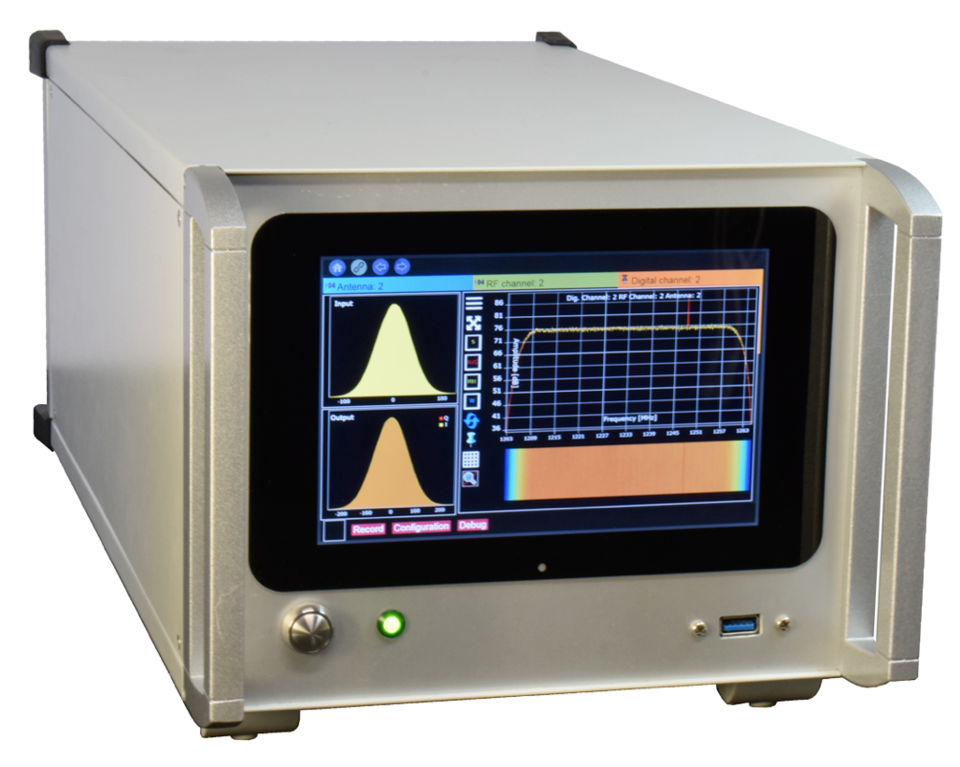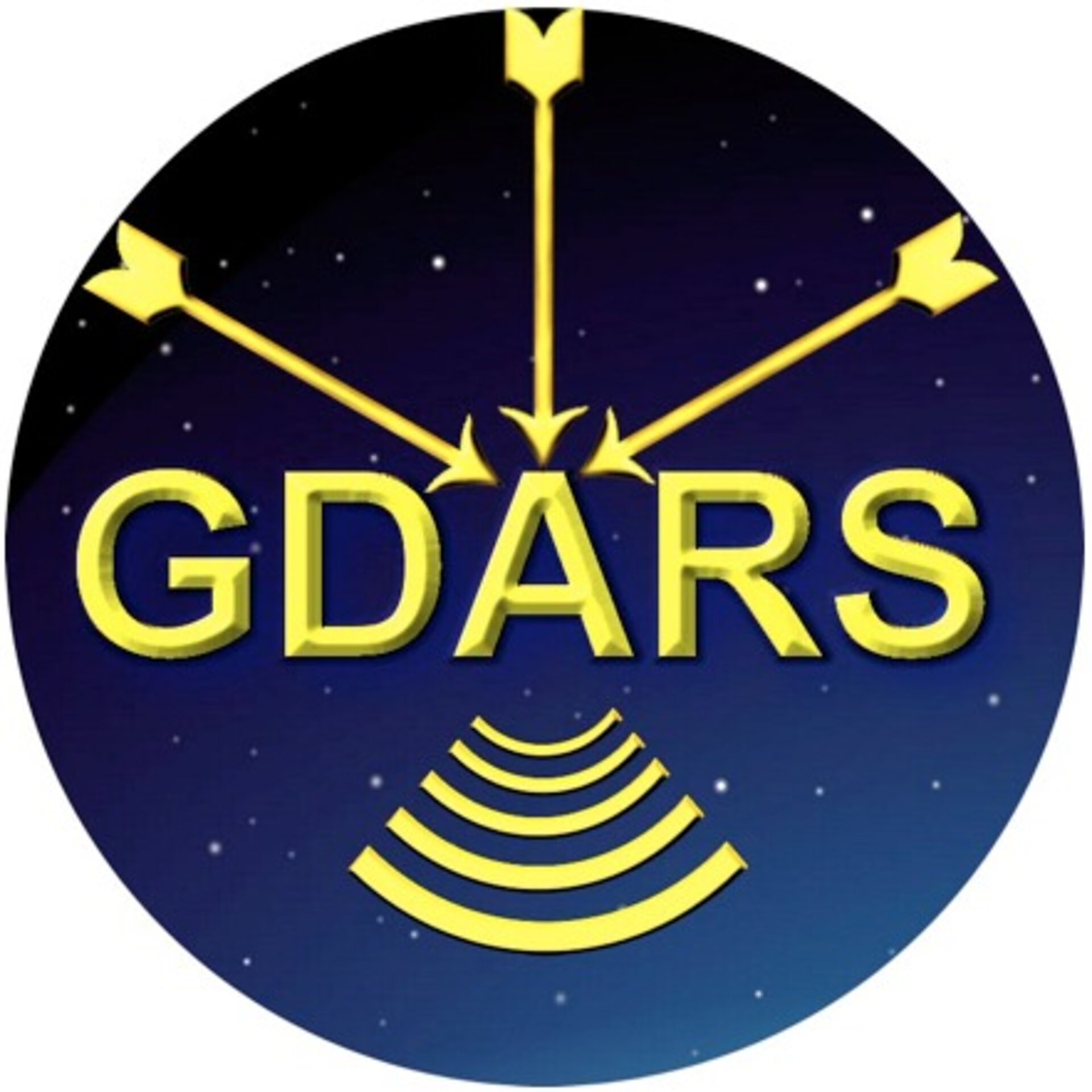GNSS Data Acquisition and Replay System
GSTP: Make Project: GNSS Data Acquisition and Replay System (GDARS)
Company |
Country |
Website |
|
| SAPHYRION Sagl | Switzerland | http://www.saphyrion.ch |  |
GDARS is a sophisticated instrument able to record and playback simultaneously up to four independent GNSS bands, with per channel effective signal bandwidth from 4 to 50 MHz. The high bandwidth, together with a high degree of reconfigurability, makes it intrinsically suitable for recording and playing back any RF GNSS signal and any planned future extensions of the same.
Objectives
The project aims to provide the GNSS community with an advanced instrument, which can record and playback with high fidelity up to 4 simultaneous GNSS RF bands. Its applications can be various: for instance, it allows testing in the lab a GNSS receiver under development by exposing it, in an indoor environment, to the same GNSS signals encountered and recorded in a real field trial, avoiding therefore the limits of constellation simulators and/or the need for a high number of outdoor data logging sessions. GDARS is a future-proof solution for designers of GNSS receivers processing the new wideband GALILEO and GPS signals.
The new instrument, having multiconstellation and multi-frequency capabilities, is also an ideal choice in the development of upcoming low-cost, dual frequency receivers to be widely used also in mass market applications (like self-drive cars or structural monitoring)
The project pays specific attention to achieve a user-friendly operation of the GDARS: the user can easily control the instrument via an optimized interface, providing those features normally found in high-end laboratory instrumentation like waterfall spectrum visualization over time. The user has a full control on a wide range of settings and functional choices.
Specific system requirements have been defined to compete with future and existing similar products in the market. Saphyrion’s main objectives are meeting the high performance targets and overcome the tough technical challenges. The main parameter targets reside in the high reconfigurability degree of frequencies and channels, and its compatibility to process all current and planned GNSS signals.
Features

The GDARS unit contains a complex architecture of optimized functional blocks. The signal received by GNSS antennas (up to four) is down-converted to baseband, allowing simultaneous processing and digitization of four broadbad GNSS signals, thanks to the 50 MHz bandwidth of each channel. The replay unit allows using the registered signal to synthesize, in the GSS bands, a perfect clone of the signal originally recorded. Its trasmission can be replicated as many times the user needs.
The main features of the GDARS are:
- 4 channel GNSS RF record and playback system
- 4 independent antenna inputs
- 2 antenna outputs
- L1, L2, E5ab, E6 simultaneously supported, with 50 MHz bandwidth each (record and playback)
- Per channel switchable antenna input
- Per channel configurable GNSS band
- More than 50 dB of channel isolation
- on board AGC
- < +/-5 ns differential group delay over the entire 50 MHz bandwidth
- +/- 0.2 dB in band ripple ( over the entire 50 MHz bandwidth)
- Per channel 1..8 bit programmable resolution (I/Q)
- Ethernet gigabit control interface
- Best in class RF PLL phase noise
- On board ultra-stable OCXO reference clock generator
- PPS or 10 MHz external reference synchronization
- Programmable output sampling frequency/bandwidth (4.. 50 MHz BW)
- On-board up to 16TB storage capacity
- External USB 3.1 gen 2 RAID storage support
- Available as standalone instrument or as 2U/3U 19” rack unit 12 power supply
- Host system control and monitoring web interface
- Onboard touch screen for control and monitoring
Project Plan
The project plan can be roughly divided in three phases. In the first phase the design of the instrument is finalized and extensive simulation of the digital signal processing algorithms conducted. In the second phase a prototype system is built and tested in the lab. In the third and final phase a fully engineered unit is tested in the field in real-world operating conditions, and the recorded signals are replayed in an environment simulating a development lab of a GNSS manufacturer. Early adopters can provide useful input for the final tuning of the instrument’s operational features.
Key issues
The main challenge encountered in the project is the simultaneous processing, both in recording and in replay, of four wideband (up to 50 MHz) GNSS channels. This requirement, on which the most innovative capabilities of GDARS are based, puts a very though constraints on the performance of the digital electronics and signal processing core of the instrument, and has forced the designer to develop sophisticated solution in terms of hardware implementation and FPGA programming. Another critical issue, successfully addressed and solved, was the transfer to the mass memory of a large stream of digitized data, which has made necessary an extreme optimization of the interface.
Expected Main Benefits
The project is confident to meet the needs of the community of GNSS receiver designers, who will be increasingly involved in the exploitation of wideband GNSS signals made available especially by GALILEO. In virtue of the simultaneous wideband processing of up to four GNSS signals, GDARS competes successfully in term of price with alternative but much more expensive solutions. The compactness of the instrument and its rich set of user interface features are additional benefits offered to the end user, who requires them in view of GNSS signals recording sessions in the field.
Current Status
The project, which has been extended by a short CCN, has completed the second phase mentioned above, i.e. a fully functional prototype has been built and is currently under test in the lab. Field experiments are planned to ascertain and confirm the correct operation of GDARS under real-world condition. Early demonstration at some key account’s premises have already been scheduled.
Contact

| Project Manager: | Eng. Angelo Consoli | sales@saphyrion.ch |
|
Strada Regina 16 6934 Bioggio (TI) Switzerland |
Saphyrion Sagl | |
| Tel: +41 91 220 11 00 | Fax: +41 91 220 11 01 | |
| Additional Contact: | Dr. Yuval bar Yossef | biz.dev@saphyrion.ch |
|
Strada Regina 16 6934 Bioggio (TI) Switzerland |
Saphyrion Sagl | |
| Tel: +41 91 220 11 03 | Fax: +41 91 220 11 01 | |
| ESA Technical Officer: | Olivier Smeyers |


